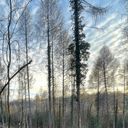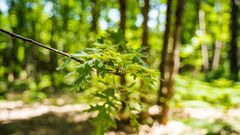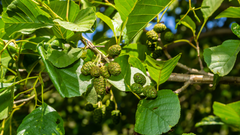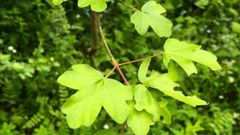
Malus sylvestris is distinguished by its deciduous leaves, which turn bright green in spring and red in autumn. Medium to large in size, it can reach heights of 5 to 10 metres. Its shape is often rounded, with spreading branches. The flowers of the European crab apple appear in early spring and are white or pink in colour. They attract pollinators such as bees. The fruit of the European crab apple tree appears in autumn and is often small, measuring around 3 to 4 cm. They are edible, but their flavour is rather acidic. In the Middle Ages, these acid fruits were used to preserve food and season salads. Round or oval in shape, the fruit of the wild apple tree is greenish-yellow, turning red when exposed to sunlight. Their smooth grey-brown can be recognised as dark brown bark, which becomes rough and cracks with age.
The fruit of the wild apple is edible for humans, who also plant these trees for their ornamental properties in parks, gardens and green spaces.







Explore EcoTree's unique approach to forestry, reforesting and how we give everyone a chance to own a piece of the forest.